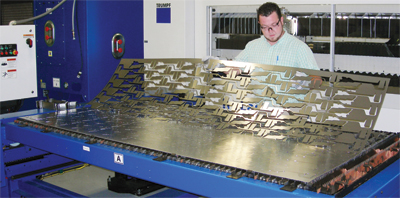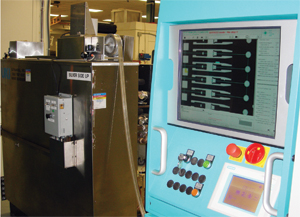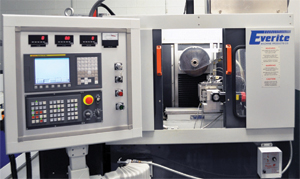 Brad Kuvin
Brad KuvinMaking its Mark in the Medical-Device Market
April 1, 2010Comments
Vertical integration: The process in which several steps in
Want to uncover some power in the medical-device marketplace? Look no further than Micro Stamping Corp., Somerset, NJ, and its Micro Medical Technologies division. For 25 years, the company has evolved into a major supplier of medical subassemblies and assemblies, precision high-speed stampings and multislide parts. It also conducts new-product development and design-for-manufacture engineering studies, and has developed expertise in a number of other manufacturing techniques —metal- and plastic-injection molding, tube fabrication, automated and cleanroom assembly, CNC machining, wire-EDM and every finishing operation under the sun including electropolishing and sharpening. Micro Medical boasts it’s ready to be the medical industry’s “supply chain, from concept to commercialization.”
“Customers in this market represent the most innovative and active developers of new products in the world,” says Carl Savage, vice president of sales and marketing. “And they require their suppliers to be the same—innovative and creative, and very diversified.”
Rolling Tube in a Prog Die
Since 1986 when the firm stamped its first ligation clip for a medical OEM, Micro Medical quickly found that the catalyst for allowing it to grow its share of medical-device market would hinge on its ability to perform inhouse as many value-added and secondary processes as possible. The results speak for themselves—it now supplies parts and assemblies to nearly every medical-device company
Among its claims to fame has been the development of a proprietary progressive-die process to manufacture a rolled tube to replace traditional drawn tubing. Developed about 10 years ago for the manufacture of endoscopic instruments, the progressive-die tube-stamping process reduces part costs by as much as 75 percent, partly because features such as slots and holes can be added in the die rather than as costly secondary processes.
“We can stamp tube from 3- to 10-mm dia.,” says director of technical services Frank Jankoski, “with wall thickness from 0.010 to 0.030 in., and perform operations such as lancing, coining and embossing.”
The process was recently enhanced as a testament to the firm’s dedication to continuous improvement—a must in the medical-supply game—by using laser welding to seal the seam in the rolled tubing.
“Up until a few years ago, we used to seal the joint by covering the tube with a piece of shrink tubing or by spraying on a seal coating,” adds Jankoski. “But that added 0.010 to the tube OD.”
Now the firm can laser-weld the seams, having optimized an automated welding process to fine-tune laser power, beam-spot size and welding speed to minimize tube distortion. It also integrated straightening and leak-testing stations into the process.
“We were early adopters of laser technology for manufacturing,” says Savage, harking back to 1994 when the firm developed laser-assisted metalforming. “We developed that process for manufacture of titanium ligating clips, where the wire used to form the clip must be bent back on itself on a 0.014-in. arbor. By firing a laser into the die, timed with the action of the press, we laser-zone anneal the material to avoid tears and cracks in the clip.”











